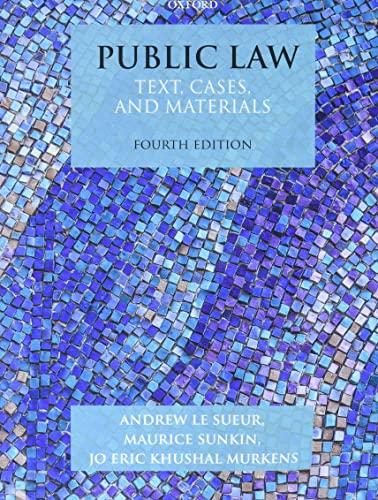Question
chapter 169 bonus and challenging questions AT & T filed motions for judgment notwithstanding the verdict or, in the alternative, for a new trial on
chapter 169
bonus and challenging questions
AT & T filed motions for judgment notwithstanding the verdict or, in the alternative, for a new trial on June 23, 1980. These motions were denied without opinion on July 29, 1980. On August 25, 1980, AT & T filed its notice of appeal. On September 8, 1980, MCI filed a notice of cross-appeal.[7]In this opinion, we reject challenges to certain jury findings upon which AT & T's liability was based, sustain other challenges, and remand for a new trial on the issue of damages.This same nationwide network was used as well by AT & T to provide other intercity telephone services, including point-to-point private lines, foreign exchange lines ("FX") and common control switching arrangements
1094
*1094("CCSA"). Point-to-point private lines (also called tie lines) are connections between two locations that do not require the use of local switching machines because the lines are available to the customer on a continuing and exclusive basis. FX and CCSA, although classified for tariff purposes as private line services, do require interconnection with local switching machines.[10]
Question 1
What is the Bernheim effect and the reverse Bernheim effect?
Question 2
Kindly explain why the left side of the heart is more prone to disease.
Question 3
1. Is it always necessary to examine the cardiovascular system of a
patient in the 45 incline of the head end? Other than convenience for
examining the jugular venous pressure (JVP), does this position have
any other advantage?
2. If the JVP is not visible when the patient is in the upright position, can
one presume it is not raised?
Question 4
The mitral area (of auscultation) normally corresponds with the apex
beat. When the heart is dilated and the apex beat is shifted laterally, will
the mitral area follow the apex beat to its new location or remain at the
place where the apex beat is normally situated?
Question 5
Please explain in detail how to measure the pulsus paradoxus using
a sphygmomanometer.
Question 6
What is the difference between dicrotic pulse and pulsus bisferiens?
Question 7
1. Why does the radial pulse become more prominent when the hand is
lifted overhead?
2. Please explain the mechanism of a collapsing pulse. Which is the best
artery to elicit it: radial, brachial or carotid?
Question 8
What is the mechanism of Durozier's sign?
Question 9
What effects do aortic stenosis, aortic regurgitation and coarctation of the
aorta have on systolic and diastolic blood pressure, and why do they
produce these effects?
Question 10
In the section headed 'Pulsus bisferiens' (K&C 7e, p. 691) what do
'percussion wave' and 'tidal wave' mean? An illustration here would be
helpful
Step by Step Solution
There are 3 Steps involved in it
Step: 1

Get Instant Access to Expert-Tailored Solutions
See step-by-step solutions with expert insights and AI powered tools for academic success
Step: 2

Step: 3

Ace Your Homework with AI
Get the answers you need in no time with our AI-driven, step-by-step assistance
Get Started


